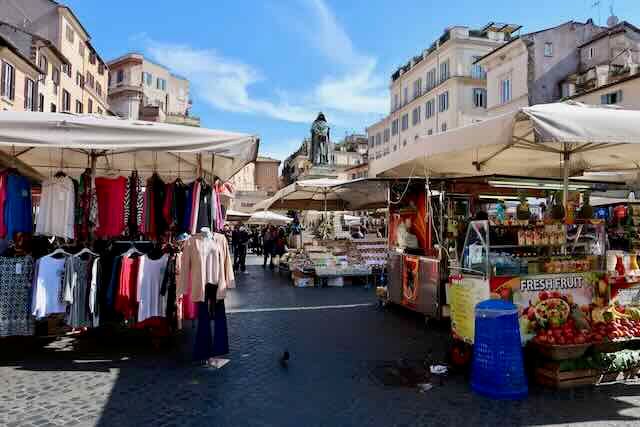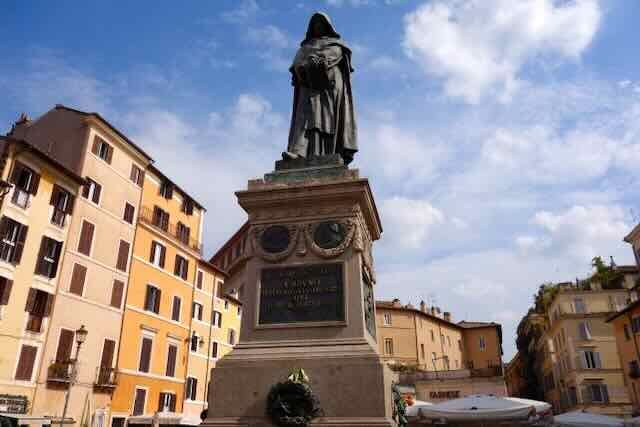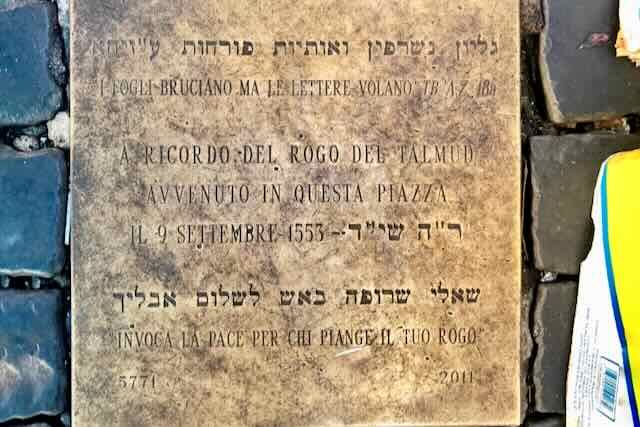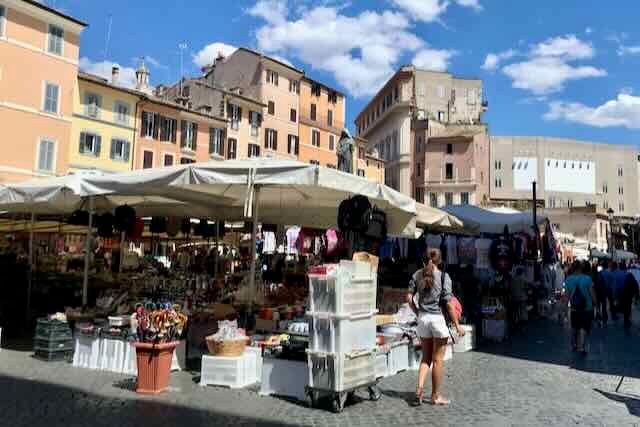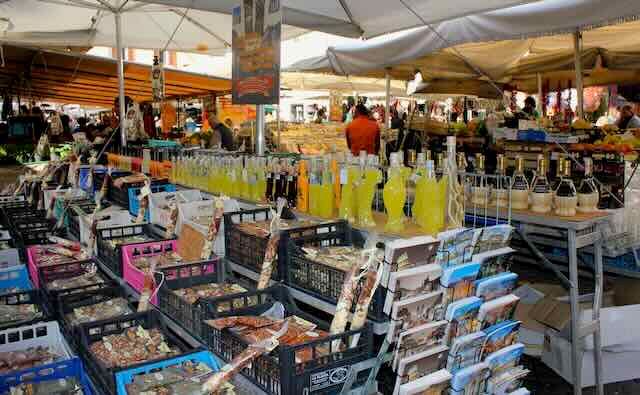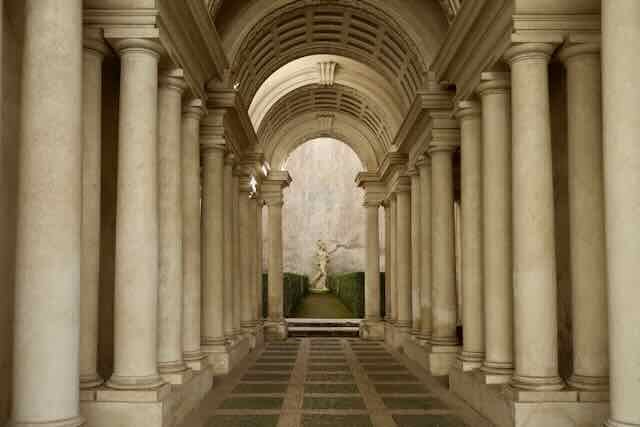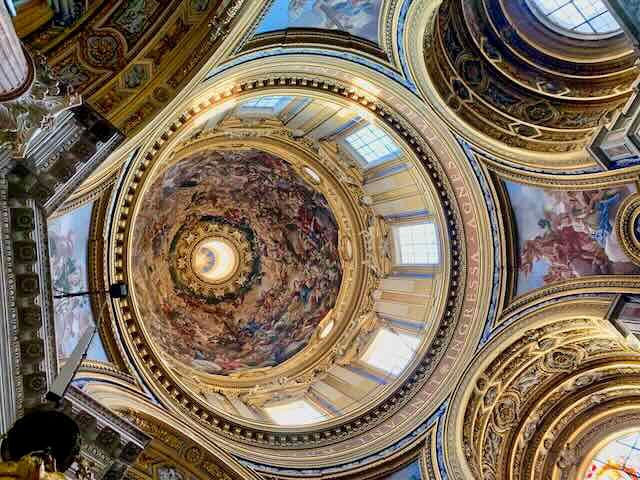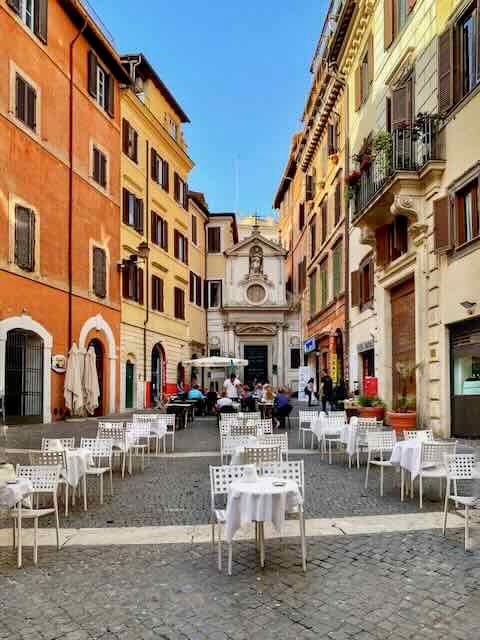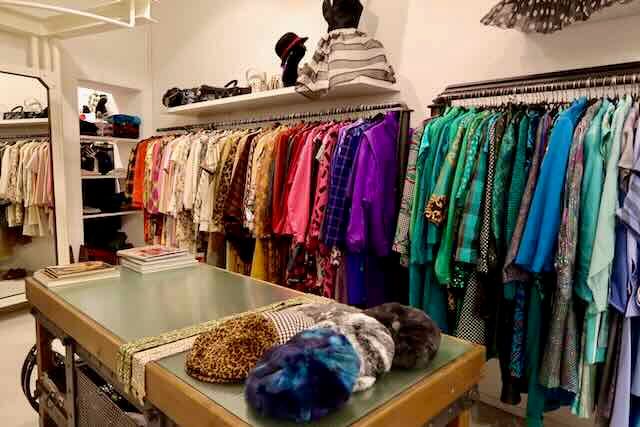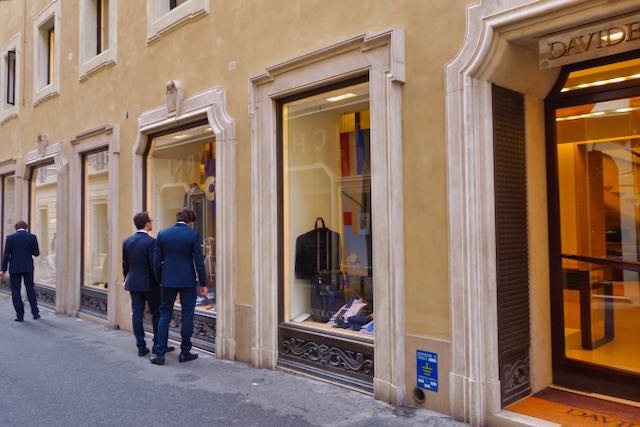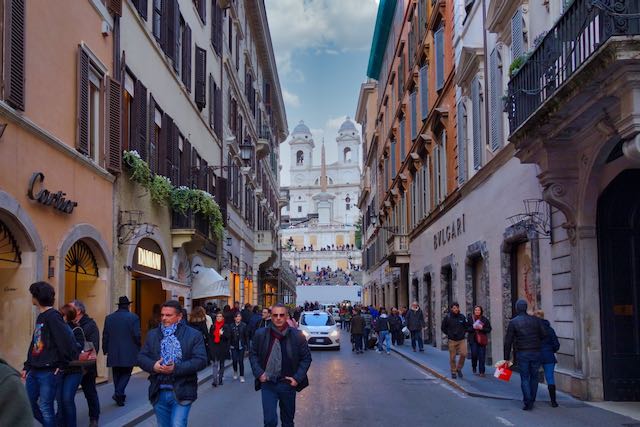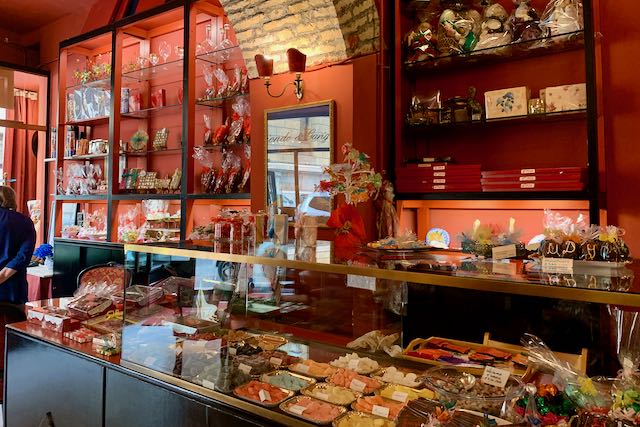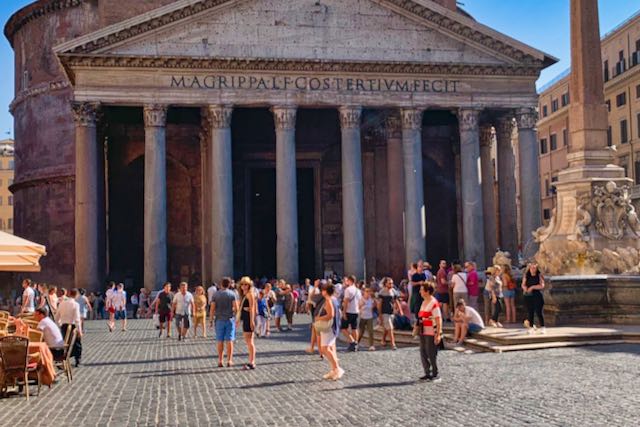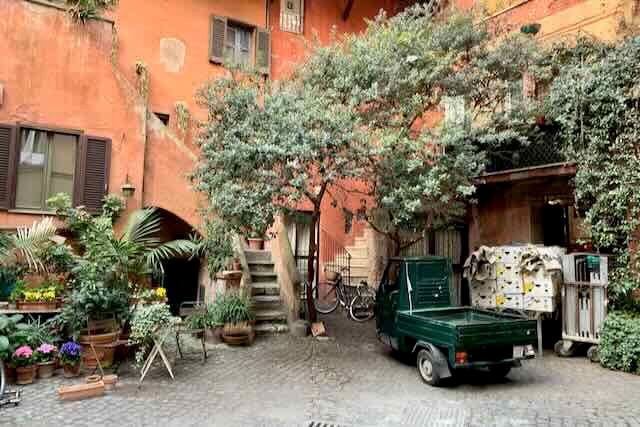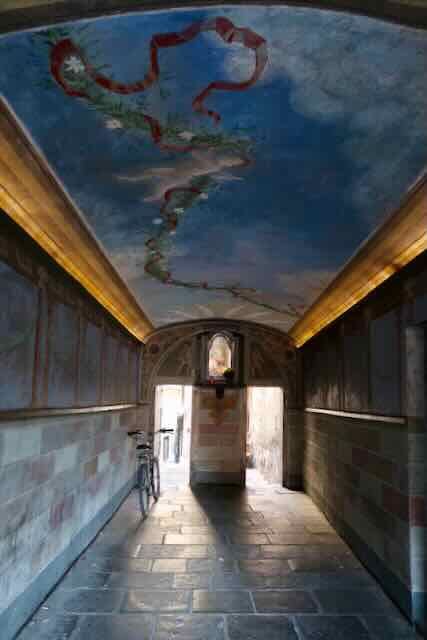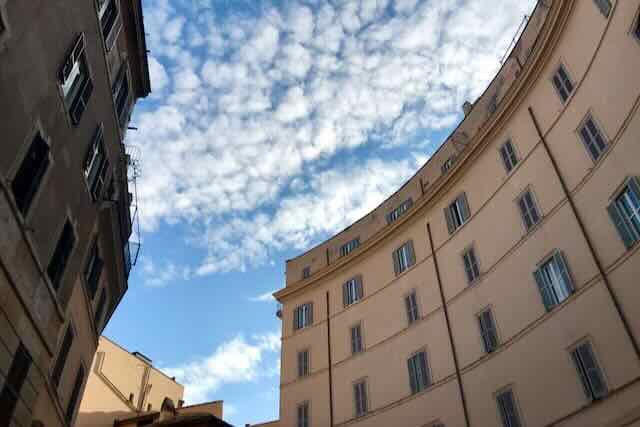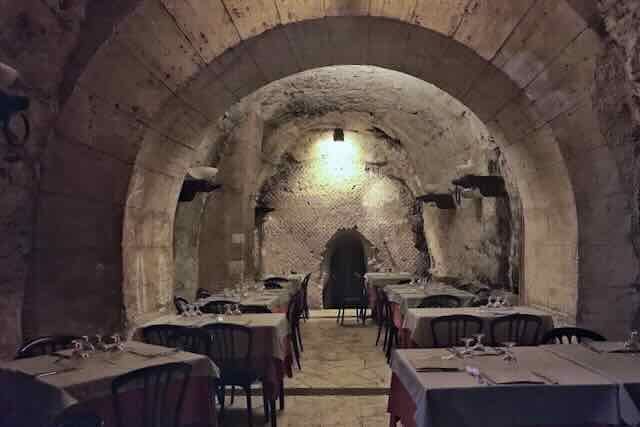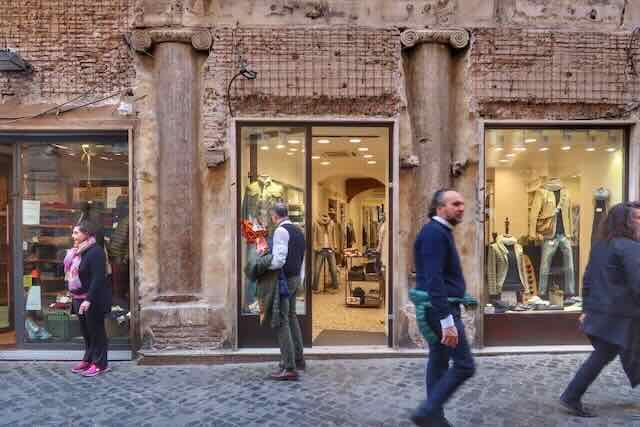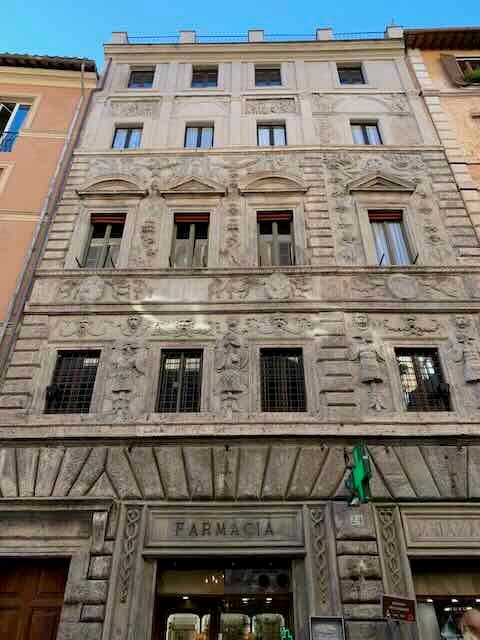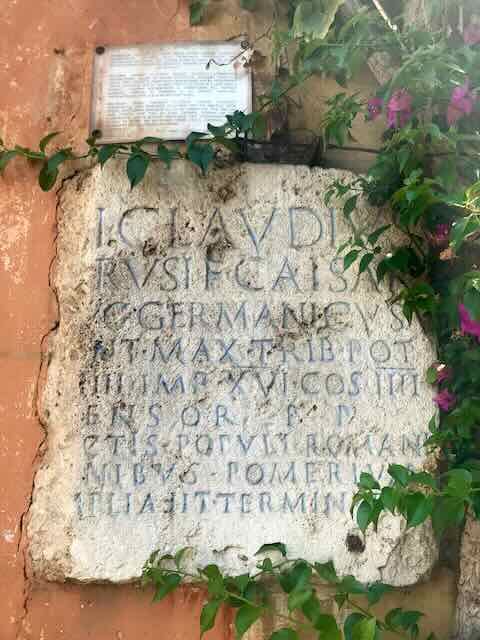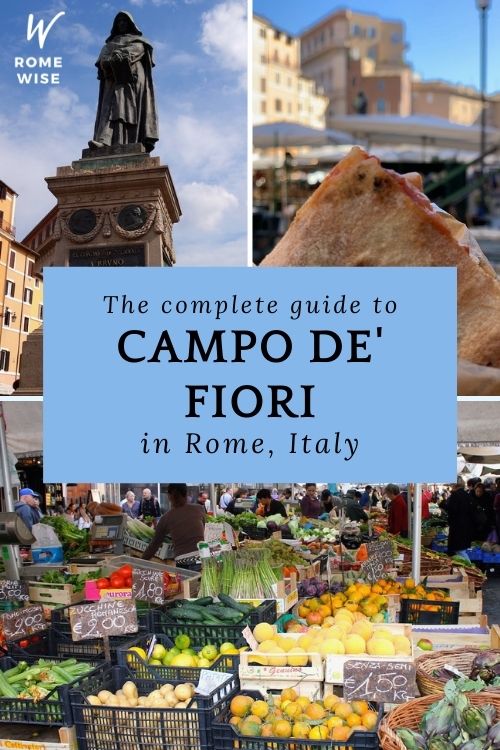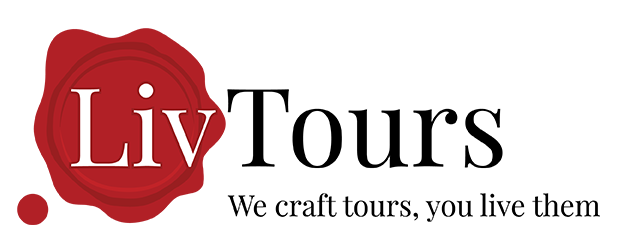- Sign up & get a FREE ebook Subscribe NOW!
- Romewise Home Page
- Campo De Fiori
Campo de Fiori - a complete guide to this charming Rome neighborhood
Campo de' Fiori is one of Rome's most characteristic neighborhoods.
This square, famous market, and neighborhood all come together to create a unique and lively atmosphere.
When you visit Campo de' Fiori, you will see the only open-air covered market left in Rome.
But don't stop there - explore beyond this piazza to discover a neighborhood rich in history!
On this page, I'll share with you:
- What is Campo di Fiori? What does it mean?
- What is the history of Campo dei Fiori?
- Where is Campo de Fiori in Rome? How to get to Campo di Fiori?
- Is Campo dei Fiori a good neighborhood to stay in?
- What to do in Campo de' Fiori - shopping, museums, churches and things to see and do
- Some secret spots not to miss!
What is Campo de Fiori?
Campo de' Fiori Rome is a public square in the historic center of the Eternal City, best known for its outdoor market and nightlife.
Its centerpiece is the bronze statue dedicated to philosopher Giordano Bruno, who was executed on this exact spot in the year 1600.
The area is famous for having some of Rome's best restaurants, and also for its vibrant nightlife scene, particularly around the square itself.
The neighborhood covers two of Rome's "Rioni", or historic districts - Parione and Regola.
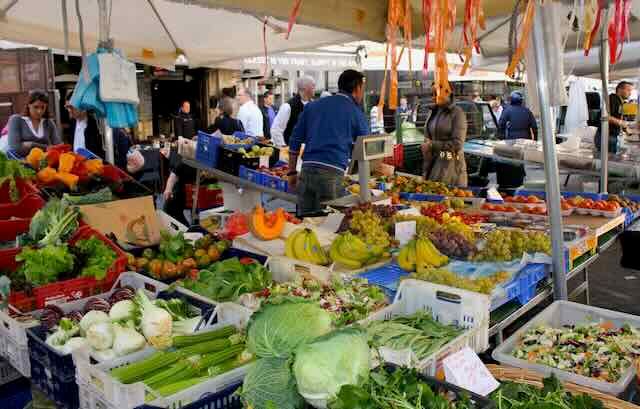 Discover lots of different types of fresh, seasonal produce daily in the lively market full of vegetable stalls
Discover lots of different types of fresh, seasonal produce daily in the lively market full of vegetable stallsCampo de Fiori market opening hours
The Campo di Fiori opening hours for the outdoor market are about 8 AM until about 2 PM Monday - Saturday.
In recent years, it's also been open on Sundays although not all the stalls are open.
If you come at about 3 PM or so, you will the market closing up and by around 4 or 5, the square will be empty of market stalls, ready for the aperitivo hour!
What is the history of Campo de' Fiori?
The phrase "campo de fiori" literally means "field of flowers" in Italian.
This is because the whole area was a meadow back in Ancient Rome and didn't change much until the 14th century.
Sometime during and after the Middle Ages, it became more and more commercialized.
There was a horse market on Mondays and Saturdays, and in 1456, Pope Callixtus III (Borgia) had the square paved.
Shops and artisan laboratories sprang up, and the piazza as we know it today began to take shape.
Public executions - Giordano Bruno
In the 17th century, the square was famously used as the site of gruesome executions.
On February 17 1600, philosopher and mathematician Giordano Bruno, a colleague of Galileo Galilei, was burnt at the stake (naked and upside down) for his beliefs, considered heretical at the time.
He was, of course, later exonerated and even became a symbol of free thought and the scientific revolution.
(Giordano Bruno was one of Castel Sant'Angelo's more famous prisoners.)
In 1889, Ettore Ferrari created the statue that now stands in the center of the square to commemorate Bruno.
Take a look at the philosopher's face.
He is gazing sternly straight across the Tiber River towards Vatican City.
Besides executions, the square was also the site of the burning of the Talmud, on September 9, 1553, the first day of Rosh Hashanah.
If you look for it, you can spot a plaque in the middle of the square that commemorates this day.
It's often covered by the stalls of the Campo de Fiori market, but you can see it after they've cleared out.
Today's outdoor covered market
In 1869, the fruit and vegetable market that had until then been held in nearby Piazza Navona moved here, where it has remained to this day.
Frankly, I find the market has become pretty touristy.
While you will still find fresh fruits and vegetables in some of the older stalls, half the stands now sell cheap clothing, souvenirs, etc.
Also, it would never have remained open on a Sunday, when most other markets in Rome are still closed.
Now you can find there is something of a Campo de Fiori market, even on a Sunday.
Regardless, if you want to visit the market itself, get here before 2 or 3pm when it closes up.
By late afternoon/early evening, the atmosphere comes to life as locals and tourists alike start to congregate for drinks and aperitivo.
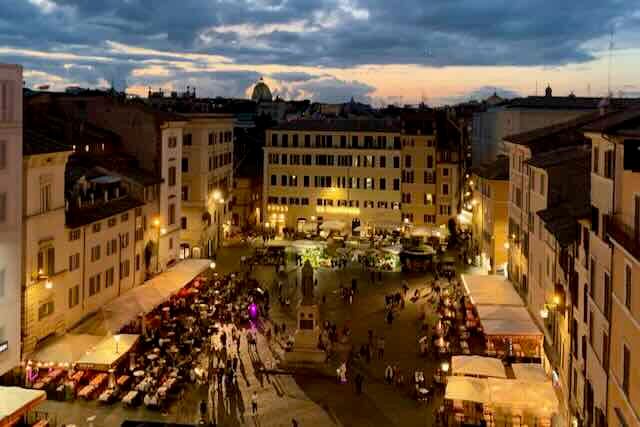 Watch the bars around the Campo de Fiori Rome market come alive as the sun sets, with young people going out and enjoying themselves at night!
Watch the bars around the Campo de Fiori Rome market come alive as the sun sets, with young people going out and enjoying themselves at night!The perfect 3-day itinerary in Rome
Trying to figure out how to organize your visit to Rome? I've got the perfect 3-day itinerary for first-time visitors (or those who have not been here in a while.) It works for a 2.5 day visit as well.
In my 3-day itinerary, you'll see all the major must-see Rome attractions like the Vatican, Colosseum, Trevi Fountain, Pantheon, Piazza Navona, Spanish Steps, and much more.
And if you have more time, or want suggestions for extra/other things to do, you'll find that there too.
Visit my page with the best 3-day itinerary in Rome for first-timers.
Where is Campo de Fiori Rome? How to get there?
Campo de' Fiori is located in central Rome within easy walking distance to Piazza Navona, Largo Argentina, the Pantheon, and the Jewish Ghetto.
There is no immediate Metro stop but many buses stop at nearby Largo Argentina and also along the Corso Vittorio Emanuele II in the center of Rome.
The area is best visited on foot so you can explore the little side streets and hidden gems.
Is Campo de' Fiori a nice neighborhood to stay in?
Absolutely! Staying in Campo de' Fiori puts you right in the historical center and heart of Rome.
You are within walking distance of some of the city's most famous sights such as the Pantheon, Piazza Farnese and the Largo di Torre Argentina.
It's also relatively easy to reach other areas on foot (or by bus), such as the Vatican, (20-30 minutes), Spanish Steps (20-30 minutes), and Piazza Venezia (15-20 minutes.)
I would recommend trying NOT to stay right on the square, due to the noisy nightlife from the lively outdoor bars and cafes, unless your Campo di Fiori Rome hotel or apartment has soundproofed windows.
What to do in Campo dei Fiori
While many people think of Campo di Fiori as a market square or a nice place for outdoor nightlife, there are many interesting things to see and do in the area, especially on the surrounding streets.
Whether you are staying in this part of Rome or just wish to explore, here are some of my favorite things to do in Campo de' Fiori and the surrounding neighborhood:
Museums
Rome is packed with museums, and Campo dei Fiori is no exception.
None of the top must-see museums are here, but there are some hidden gems worth checking out.
These include:
Museo Barracco
This superb small museum of ancient art and sculpture is located at the intersection of via dei Baullari and Corso Vittorio Emanuelle.
It's free and absolutely worth spending an hour in.
Museo di Roma in Palazzo Braschi
A short walk from the piazza, this museum tells the history of Rome through art, film, and photography, with a particular focus on the 19th century.
Galleria Spada
This art gallery and former Baroque noble palace is chock full of sculpture and painting masterpieces by artists such as Gianlorenzo Bernini, Titian, Artemisia Gentileschi, and Guido Reni, among many others.
Not to be missed is this amazing perspective designed by master Baroque architect Francesco Borromini.
Palazzo Farnese
This palazzo in Piazza Farnese just next to Campo di Fiori houses the French embassy to Italy and is not generally open to the public.
You can visit it by booking in advance on their official website here.
It's absolutely worth it to see the stunning Renaissance architecture and the wonderful frescoes by Annibale Carracci in the Galleria Farnese.
And, you can visit it for free once a year on European Heritage Day, around the third week of September (visit my page about September events in Rome for up-to-date details.)
Leonardo da Vinci museum
Hidden away inside a gorgeous Renaissance courtyard inside Palazzo della Cancelleria, this small museum is dedicated to the life and works of the great Leonardo da Vinci.
You can see full-scale models of the Renaissance genius' inventions.
Largo di Torre Argentina
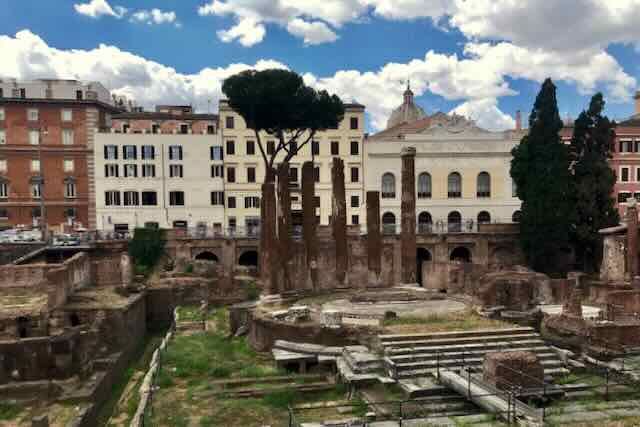 Don't walk by this fascinating slice of Rome's historical heart without looking down into the ruins next to the main road!
Don't walk by this fascinating slice of Rome's historical heart without looking down into the ruins next to the main road!While not technically a museum, you may wish to visit this site, which was the actual location of Julius Caesar's assassination in 44 BCE.
From all sides, you can see the ruins of four Roman temples that have been excavated here.
It also happens to be home to one of Rome's most beloved cat colonies.
Churches
One of the curious things about Campo dei Fiori is that it's Rome's only public square that doesn't have a church.
There are, however, a few churches in this neighborhood worth visiting, including:
Sant'Andrea della Valle
Sant'Andrea della Valle was designed by Baroque superstar architects Carlo Maderno and Giacomo della Porta.
It's worth visiting for the architecture alone, but it also has some interesting art inside, including the 17th century dome frescos by Giovanni Lanfranco and Domenichino.
The dome, at a height of 80 meters/260 feet, is the second highest in Rome after the dome of Saint Peter's Basilica (although technically, St. Peter's in Vatican City is not in Rome, so the dome of Sant'Andrea della Valle is in fact the tallest in Rome.)
Disclosure: If you make a purchase through a link on this page, I may receive a small commission - at no extra cost to you. Thank you for supporting my site!
San Giovanni dei Fiorentini
Another Baroque masterpiece in this area is the basilica of San Giovanni dei Fiorentini.
The church is important, in part, due to its being the site where Francesco Borromini and Carlo Maderno are buried.
It is the national church of Florence in Rome and the facade, by Maderno, is one of the most beautiful in Rome.
Santissima Trinità dei Pellegrini
In this church, you will find a beautiful painting of Christ on the Cross by Guido Reni over the altar.
You can also attend Mass in Latin.
Sant'Agnese in Agone
This stunning basilica in nearby Piazza Navona was designed by the great Baroque architects Francesco Borromini, Carlo and Girolomo Rainaldi, and Gianlorenzo Bernini.
You might not be able to tell very well from the outside, but it's worth going inside to see the cupola (dome.)
Chiesa Nuova (or Santa Maria in Vallicella)
This beautiful Baroque church was founded in 1575 by St. Philip Neri (who is buried here) and his disciples, and contains artworks by famous artists such as Guido Reni, Pietro da Cortona, and Peter Paul Rubens.
Santa Barbara dei Librai
This tiny church is worth seeing, not least for the charming little square it's in.
And if you come here, don't miss trying the famous fried baccalà (cod) at Dar Filettaro just next to it.
Shopping
Campo dei Fiori may not seem like a shopping destination but there are actually some great shopping options and a few cute little shops in the neighborhood if you know where to look.
These include:
- Via dei Giubbonari - this street, like so many others in this area, refers to something that was sold here, specifically jackets (giubbonari means jackets in Italian.) The street is not very charming but is chock-a-block with small shops of varying quality.
- Among the shops you will find on via dei Giubbonari and on nearby streets are jewellery shops selling gold. Most of these shops are not fancy at all, and sell the gold by weight. You'll have to go in and ask for what you want, i.e. what type of chain, quality of gold, etc. They'll bring out trays and show you and then you pick and they weigh it.
- In my opinion, the best boutique shopping is actually on the quieter surrounding streets of via Giulia, via del Pellegrino, via dei Cappellari, and via Monserrato that turns into via dei Banchi Vecchi.
Hidden Gems in the Campo dei Fiori neighborhood
In addition to museums, churches, and shopping, there are plenty of other things to see and do in Campo dei Fiori and the surrounding neighborhood.
Here are some of my favorites:
Arco degli Acetari
This is a small archway just off of via del Pellegrino which doesn't look like much, but it leads to one of the prettiest tiny piazzas in Rome.
Passetto del Biscione
This little covered alleyway connects via di Grotta Pinta to Piazza del Biscione, just off Campo de' Fiori.
It's possible the name "Biscione" derives from the powerful Orsini family's coat of arms which featured an eel.
The Passetto once housed a 16th century icon of the Madonna, now in the nearby church of San Carlo ai Catinari.
A Roman saying "andà a cercà Maria pè Roma", loosely translates to "go look for Mary somewhere in Rome", because the Madonna image was so well-hidden in the passageway that it was almost impossible to find.
Pompey's theater
In 55 BCE, Pompey built Rome's first stone theater.
(On Largo Argentina, you can see the site of Julius Caesar's murder in 44 BCE. That spot was the back stairs of Pompey's theater.)
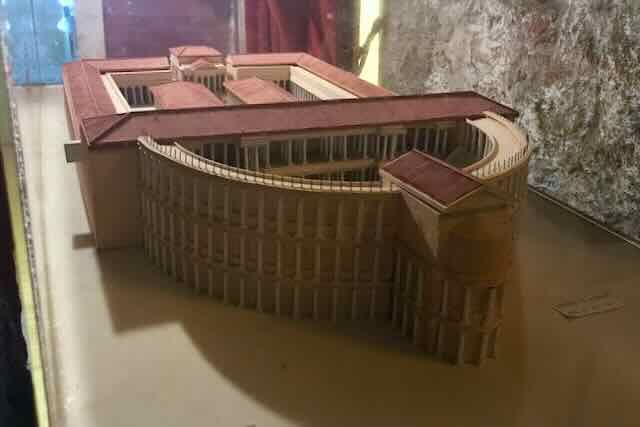 Pompey's theater was a very important site in Ancient Rome - you can still see the shape of it in modern Rome!
Pompey's theater was a very important site in Ancient Rome - you can still see the shape of it in modern Rome!You can sort of visit this archaeological site in two ways.
By following the curvature of the street starting on via dei Chiavari then following via di Grotta Pinta around to Largo del Pallaro, you are actually tracing the shape of the exedra of the original theater of Pompey.
If you visit the restaurant Da Pancrazio in Piazza del Biscione, you can head into the basement to see ruins of the theater.
You can actually dine down there and in fact, I recommend it.
It's one of my favorite "old-school" restaurants in this area (I like to eat inside, at the table that is right by the window, so I can look out onto the little piazza there.)
Campo de' Fiori Tours
If you're looking for the best tours of this charming neighborhood, from food tours to history tours, visit our partner GetYourGuide.
Spoglia of Regola and Parione
Spoglia are re-used architectural elements from Ancient Rome, and you can often spot them around Rome.
One of the most famous examples of this is the fallen Colosseum stone that was re-purposed for the facade of St Peter's Basilica.
In the Regola and Parione Rioni, which comprise the Campo dei Fiori neighborhood, you can spot these spoglia all over the place.
Palazzo Spada
I highly recommend going inside Palazzo Spada for the museum, but especially for one of the area's best hidden gem's, Borromini's perspective.
But even a stroll that includes Piazza Capo di Ferro will allow you to see the beautifully decorated façade of one of the most important buildings in the area.
Ready to plan your trip?
Book your train
Planning to travel between cities in Italy and other parts of Europe?
Use Trainline to see all the different options available across the different rail companies.
Find your hotel
Find your perfect place to stay in Rome.
Use Booking.com to choose between hotels, guesthouses, and self-catering apartments in neighborhoods throughout the Eternal City.
Buy your TurboPass
Purchase the convenient Turbopass and visit all of Rome's top attractions including the Colosseum, Pantheon, and Vatican.
With one handy pass, it's all included.
Palazzo dei Pupazzi (Palace of the Puppets)
This unusual 16th century building, Palazzo Crivelli in Via dei Banchi Vecchi, is better known by its nickname due to the richly decorated facade with military figures that somehow resemble puppets.
Pomerium of Emperor Claudius
If you look carefully on via dei Banchi Nuovi before it becomes via Monserrato, you can spot a stone in the wall.
This is the "Pomerium of Claudius" which commemorates the year 49 CE when Roman Emperor Claudius increased the boundaries of the city of Rome.
(Pomerium is a contraction of post moerium 'beyond the wall'.)
I hope you enjoyed this guide to Campo de' Fiori.
If you stay here, or even just come for a visit, take some time and explore this great place!
Romewise's Top Travel Resources
Ready to book your trip to Rome? Take a look at these helpful links to companies we use and trust:
- Keep your travel spending simple with the Wise card, which removes all the worry about exchange rates and high transaction fees all over the world
- Search for and book your perfect accommodation
- Our complete guide to what to pack for Rome
- The number one travel accessory, a multi-point travel adapter and voltage converter
- Browse a huge range of tours in Rome and beyond
- Experience unique tours and special access to Rome's most popular sights
- Protect yourself with comprehensive travel insurance
Within this post there are some affiliate links for products and services. For more details about our affiliate policy click here.
Get your 100% free Rome trip planner now!
Simply sign-up today for our free newsletter and get the Romewise Quick Start guide to Rome:
We are committed to respecting your data. Click for our Privacy Policy.
Comments? Questions? Suggestions?
Please come over to the private Romewise Facebook group and join in the conversation.
You will often find me there, happy to answer your questions / comments!
You will also meet other Rome lovers and experts, too.
What are you waiting for?
- Romewise Home Page
- Campo De Fiori

